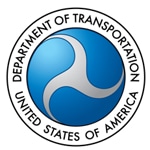Secretary urges continued cooperation to build project. Project would reduce trip time to just over 2 hours from current 3.5.

“Without a strong passenger rail system, the Southeast’s growth will be choked by congestion for a very long time,” U.S. Transportation Secretary Anthony Foxx said. “North Carolina, Virginia and the Department of Transportation have worked together to bring us closer to high-speed rail connecting Richmond and Raleigh, and I urge everyone involved to continue pushing this effort forward. High-speed rail in this region is not a luxury but a necessity.”
The 162-mile route between the two cities would utilize existing and former rail lines for approximately 60 percent of the route and is planned to be free from at-grade crossings of track and roads. This route is part of a larger multi-state planning effort to provide high-speed passenger service between Washington, D.C., and Atlanta. In July, Secretary Foxx announced that the Department of Transportation would invest approximately $1 million to develop a regional long-term vision for the corridor and engage states and stakeholders to help the region form a governance organization that can sustain planning efforts and implement the vision.
“Today brings us closer to breaking ground on this critical project for one of the fastest growing areas of the country. The project will improve safety and reliability, reduce the travel time between Richmond and Raleigh, and increase opportunity for jobs and growth in the Southeast,” FRA Acting Administrator Sarah Feinberg said.
A recent U.S. Department of Transportation report, Beyond Traffic, in turn found that our country will add 70 million more people by 2045, and that the Southeast will indeed absorb a significant portion of that growth. The FEIS includes responses to comments from citizens, elected officials, residents, businesses and other stakeholders that have been involved in the process.